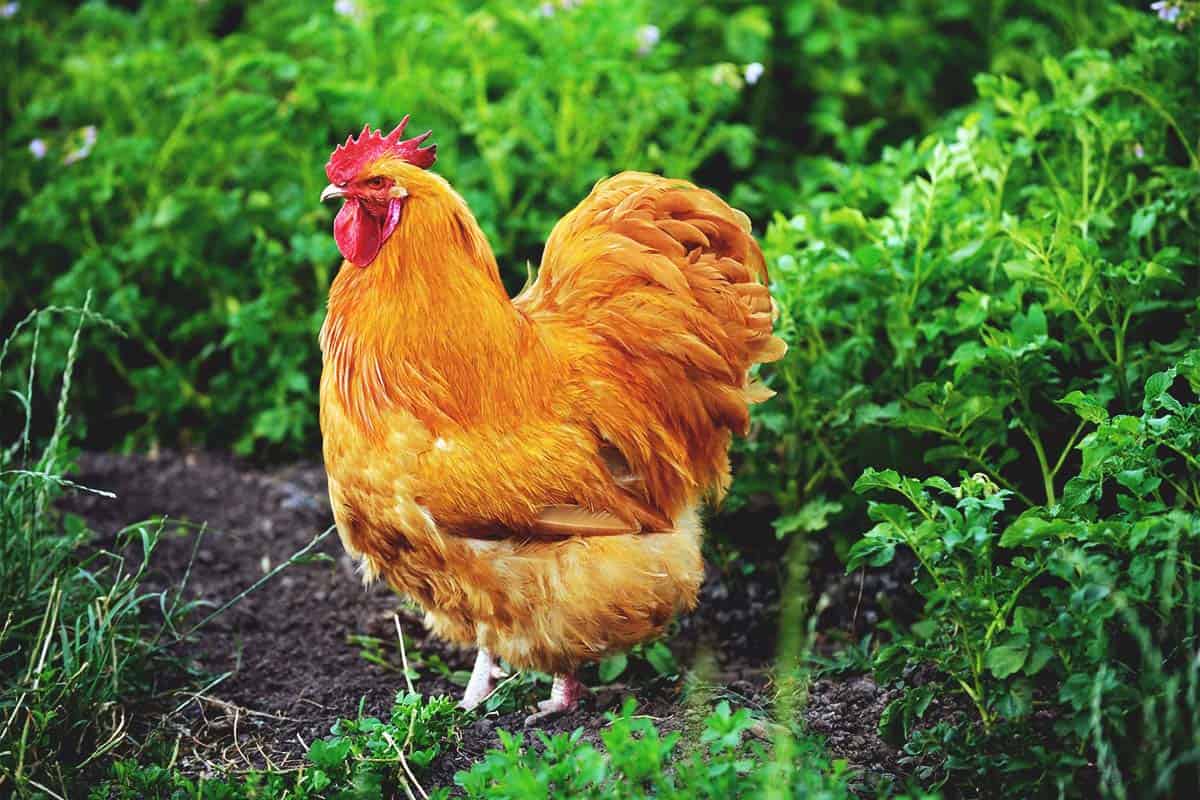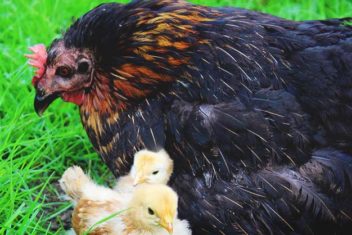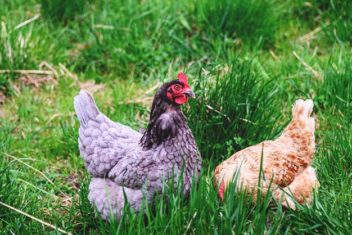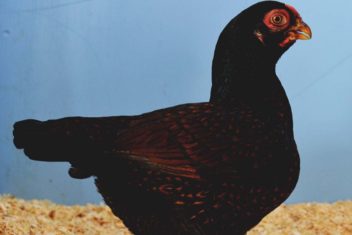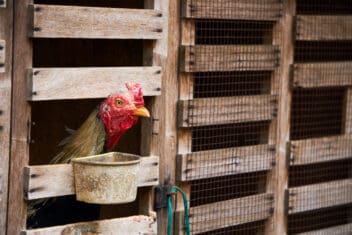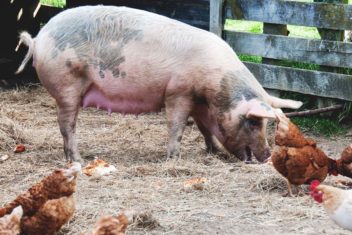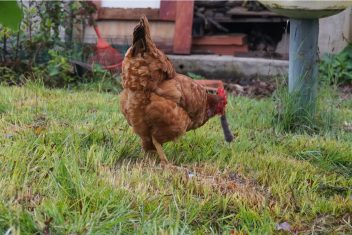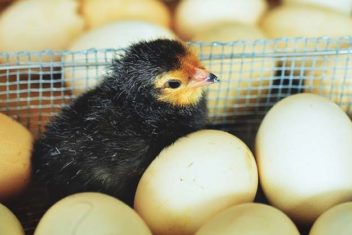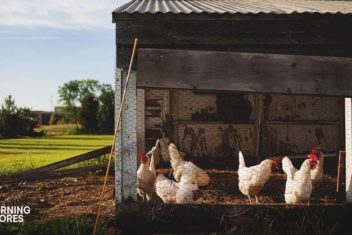Each year, more and more people are becoming aware of the consequences of what they eat.
With the hormones added to market meats, it is becoming increasingly popular for people to grow their own food. For those of us who were not born on a farm, growing your own food tends to start with fruits and vegetables. Later, they realize they need to raise their own meat for protein.
The most popular meat for people to breed in their backyard is chicken.
Chickens that are specifically raised for meat are commonly known as Broilers. Broilers make great meat chickens because they grow faster than chickens that are raised for the purpose of egg-laying and chickens that are considered dual-purpose.
In a period of just five short weeks, the chickens that are commonly known as broilers can weigh around 4-5 pounds and by the time they are 10 weeks old, they can easily reach 10 pounds, which is the ideal size for an average size family.
This makes raising and breeding broilers in the backyard the best option for those who are looking to develop a self-sustaining lifestyle.
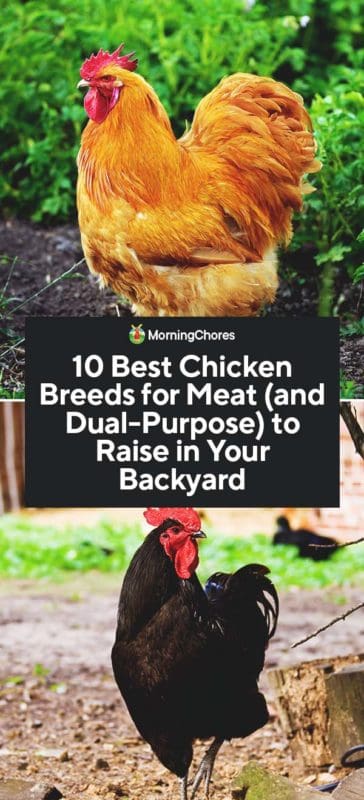
Standard Meat Chickens
1. Cornish Cross
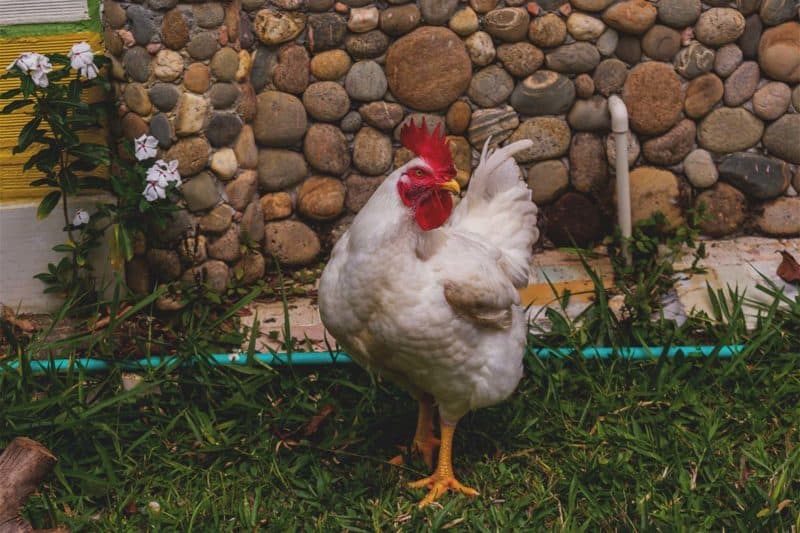
Cornish Cross and their associated hybrids are extremely favored when it comes to raising your own chickens for meat purposes.
They are capable of reaching a weight of 12 lbs in a mere 6-8 weeks of time. Because of their excellent growth rate they are the most preferred choice among the commercial meat producers and among backyard breeders.
The Cornish Cross also grows faster and tastes better than dual-purpose chicken breeds. It is also preferred over the breeds that are used only for meat purposes. Because of their super-fast pace of growth, the activity level of the Cornish Cross is very low.
These chickens have broad breasts, large thighs, and legs, with an enriched yellow skin which makes them perfect for the dinner table.
| Weight (male) | 12 lbs |
| Weight (female) | 8 lbs |
| Harvest time | 4-6 weeks |
| Pros & cons | Fast growth Lots of white meat Eats a lot |
| Variants | White |
2. Jersey Giant
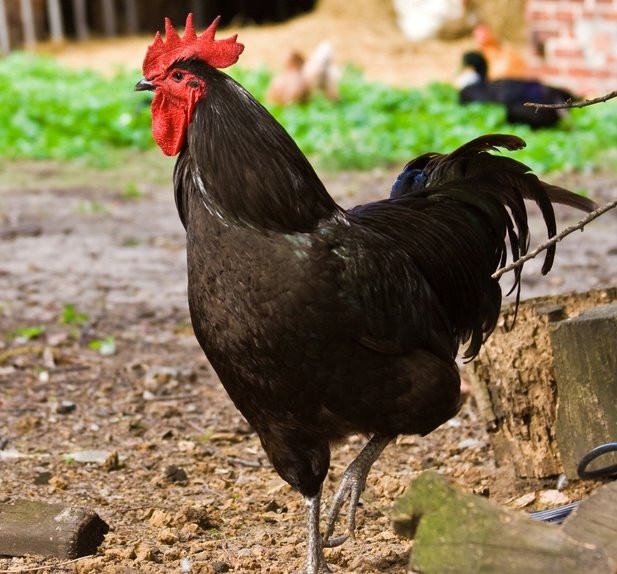
The Jersey Giant chickens have their origins in the US as they were developed with the basic thought of replacing the classic turkey. While this did not happen, it has earned a place of its own in the poultry world.
The Jersey Giants are purebred and weigh around 11-13 pounds on average.
However, these Giants grow at a slower pace than similar breeds of Broilers. They also need large amounts of time and food, which can really add up if you do not grow your own feed. This makes them quite unacceptable in the commercial meat world but a very hot product in backyard chicken coups.
These chickens are calm and docile by nature while the male Giants are considered slightly aggressive. The Jersey Giants also lay extra large brown eggs. This means that you can use them as an egg hen while you are waiting for them to reach their peak.
This breed comes in black, white and blue colors.
| Weight (male) | 13 lbs |
| Weight (female) | 10 lbs |
| Harvest time | 16-21 weeks |
| Pros & cons | Large Slow growth |
| Variants | Blue, black, white |
3. Bresse
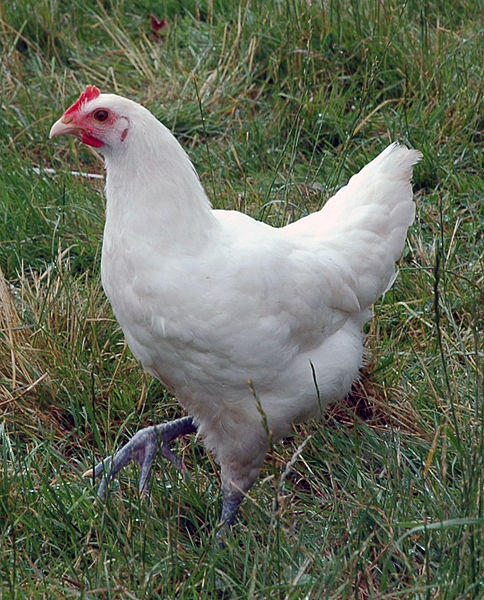
Bresse chickens are white birds that are fairly large in size.
They have bright blue feet and are a very expensive and popular breed. Do not let the price of these birds trick you into keeping your distance. Once you have your breeding pairs, the only expense you will have is the food necessary to raise your chickens.
The Bresse is famous for being the best meat tasting chickens in the world and also for their tenderness. These chickens can be of white, black, grey and blue colors.
Although they are not accepted by the American Poultry Association they remain very popular due to their very good meat qualities. More popular in France than the US, their only drawback here is the cost.
| Weight (male) | 7 lbs |
| Weight (female) | 5 lbs |
| Harvest time | 16-20 weeks |
| Pros & cons | Docile Tastes great Not too meaty |
| Variants | White, black, grey, blue |
4. Orpington
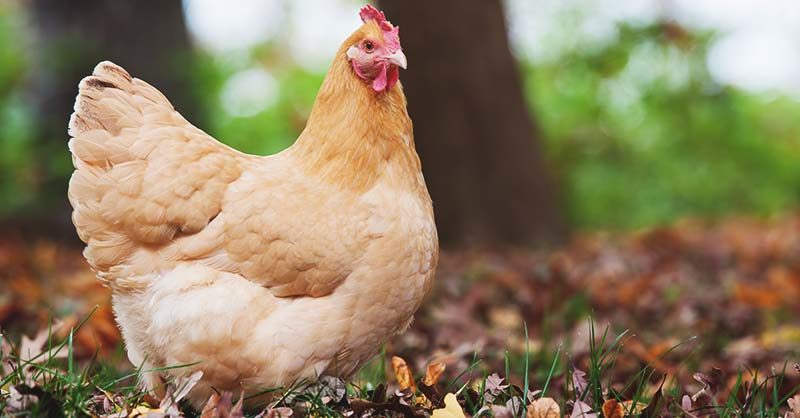
The Orpington is another heavy chicken breed that grows up to an average weight of 7-8 pounds for the female.
They are good layers but are mostly used as Broilers due to their amazing flavor and the tenderness of their meat. These birds have a short back with a curvy shape along with a U-shaped underline and a broad body.
While they’re not too big and grow at a slower rate, Orpingtons are great layers. They can lay up to 200 eggs per year.
| Weight (male) | 10 lbs |
| Weight (female) | 8 lbs |
| Harvest time | 18-24 weeks |
| Pros & cons | Great egg layer Docile Slow growth |
| Variants | Buff, black, blue, white |
5. Freedom Rangers
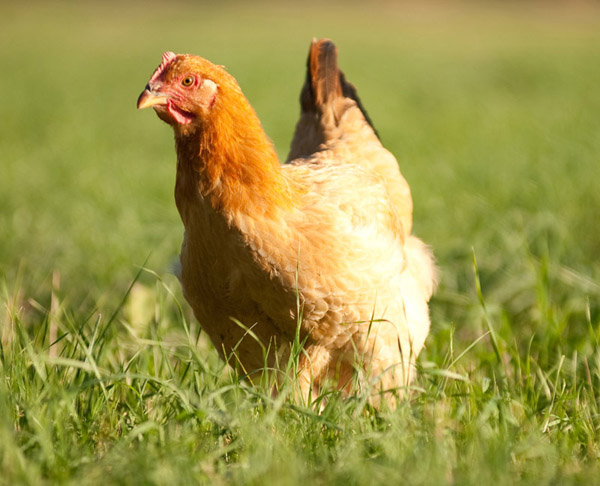
Freedom Rangers were developed with the view to be good pasture-fed meat chickens.
They were specifically bred for the pesticide-free meat market. These chickens flourish on low-protein feeds and are better at food scouting than the Cornish Crosses. This makes them perfect chickens to roam around in a large pen.
It also makes them versatile eaters.
They can survive off of field bugs and corn feed and be perfectly healthy birds for eating. These chickens are mostly found in colors of red with several barred or spotted black feathers but can also be found in shades of bronze and grey.
However, these chickens take a long time before they are ready for the slaughterhouse, especially when they are compared to the Cornish Broilers.
Even though they take longer to raise than other breeds, there are a lot of people who relish the taste of Freedom Rangers more. Some people say they’re best for rotisserie oven.
| Weight (male) | 6 lbs |
| Weight (female) | 5 lbs |
| Harvest time | 9-11 weeks |
| Pros & cons | Great for free-range Easy to keep Smaller and slower growth rate |
| Variants | Red, tricolor, black |
Dual-Purpose Chickens
For people who are always on the lookout for the best of both worlds, there is always the option for dual-purpose chicken breeds. These chicken breeds can be used for laying purposes and later be used for meat birds.
If you want to get the most for your money and have chickens that allow for ample breeding, these breeds should be high up on your list. After all, the best way to replenish your stock of meat chickens is naturally.
1. White Leghorn (And Brown)
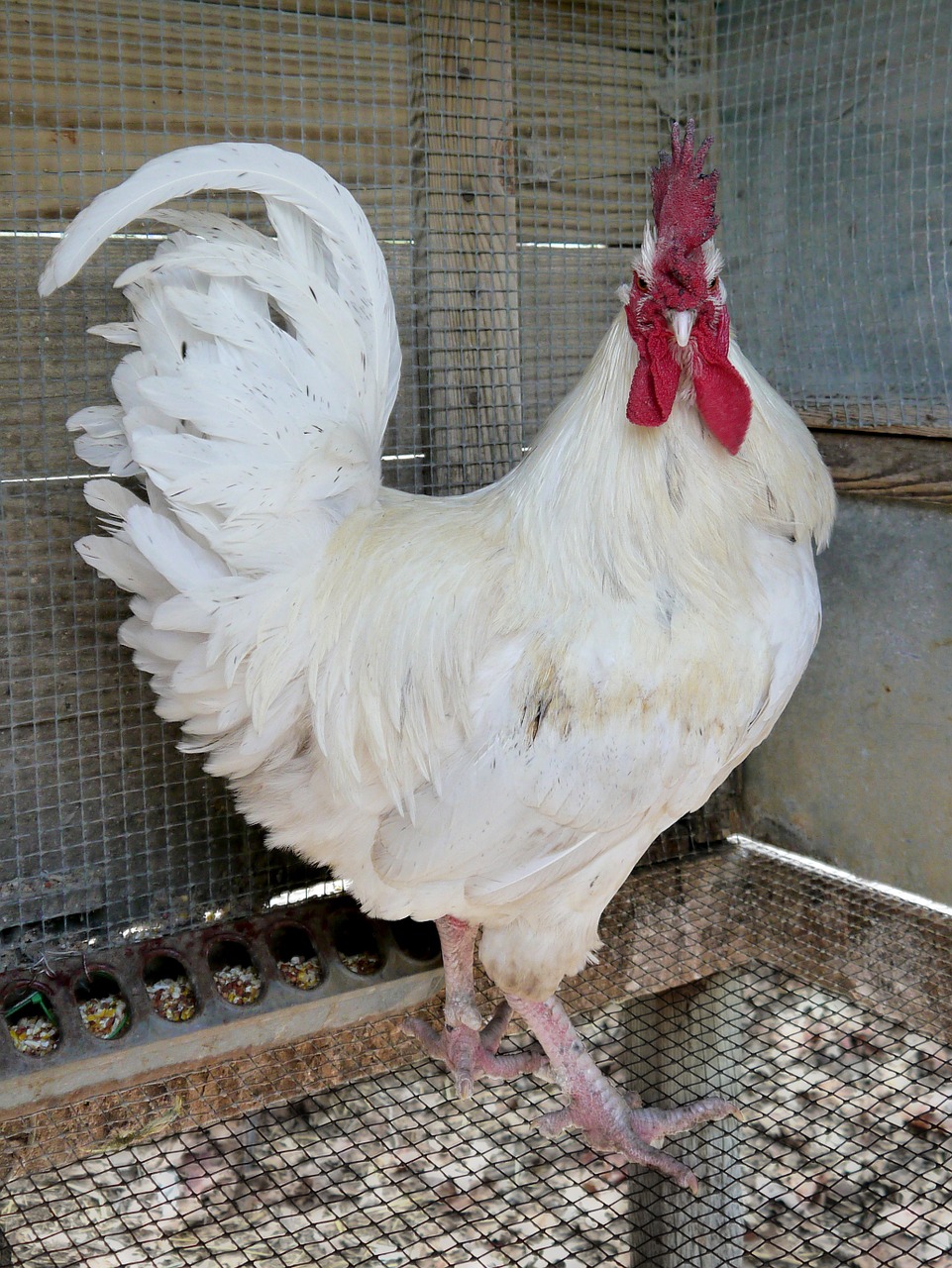
The variant of Brown Leghorn chickens, White Leghorn is one of the best egg layers. They can lay up to 280 eggs per year. But don’t be confused, there’s no actual difference between the brown and white ones (other than their feather colors, of course). And they both lay white eggs.
The Brown Leghorn is an active forager that loves hot climates. They are rarely aggressive, but at times, the males can be a bit grouchy.
| Weight (male) | 6 lbs |
| Weight (female) | 5 lbs |
| Harvest time | 16-21 weeks |
| Egg production (annual) | 280 |
| Pros & cons | Forager Great personality Good layer & decent meat |
| Variants | White, red, buff, brown, black Single comb, rose comb |
2. Egyptian Fayoumi
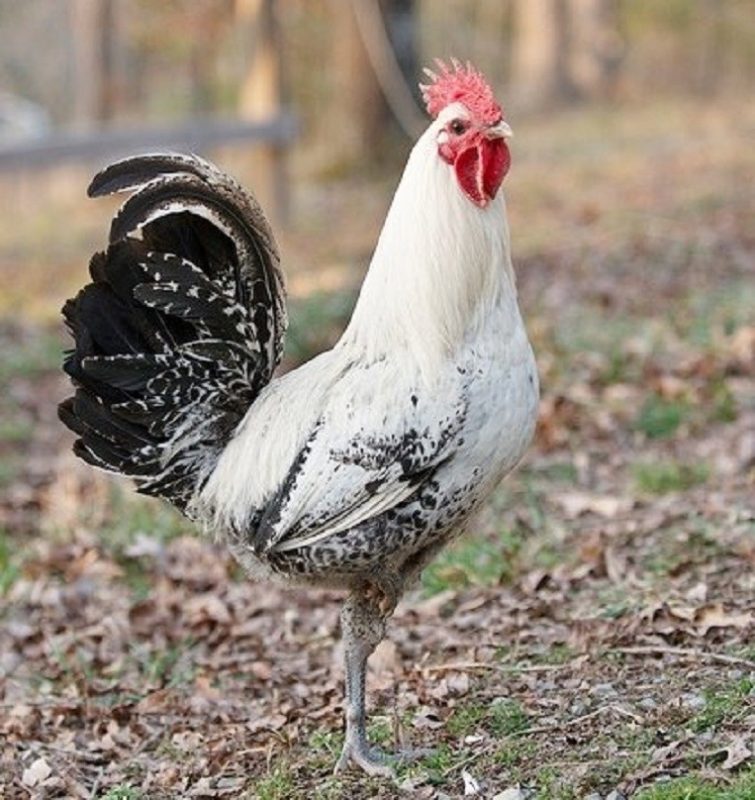
The Egyptian Fayoumi chickens are very active foragers. They love hot climates and they tend to be wild at heart. They are very rarely aggressive, but they are very disease resistant.
They are also known to mature very early in life, which means they can lay a lot of eggs before it is time for them to land on the dinner table.
| Weight (male) | 5 lbs |
| Weight (female) | 4 lbs |
| Harvest time | 14-18 weeks |
| Egg production (annual) | 150 |
| Pros & cons | Fast growth Taste great (both the eggs and meat) Flighty |
| Variants | Silver |
3. Turken (Naked Neck)
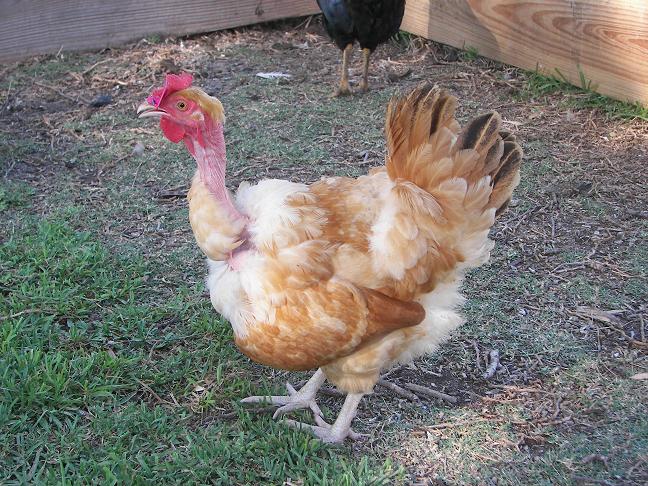
Turken Naked Neck chickens are not half chicken half turkey. But they sure look like one, hence the name.
This bird loves hot and cold weather alike, which means that you can keep them as backyard meat birds in any part of the country. They are extremely adaptable to any situation, which means that they will be less prone to stress, and put on weight easily.
These birds are very active layers and can be great mothers.
| Weight (male) | 6 lbs |
| Weight (female) | 4 lbs |
| Harvest time | 11-18 weeks |
| Egg production (annual) | 104 |
| Pros & cons | Easy to keep Decent egg and meat production |
| Variants | Red, blue, cuckoo, buff, black, white |
4. Buckeye
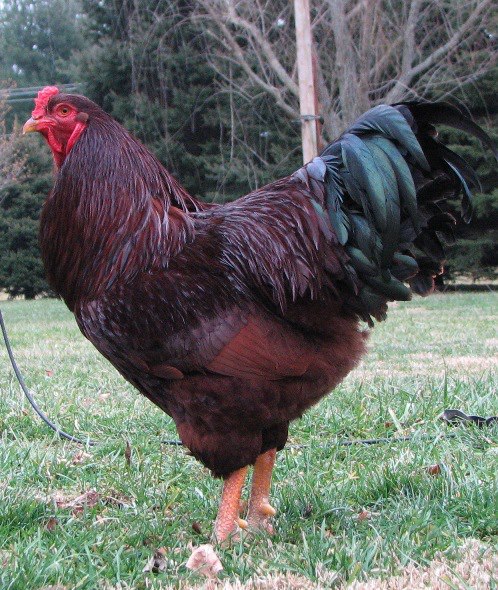
Buckey Chickens love cold climates. They are extremely adaptable, disease resistant and fairly docile. The males can grow to be a bit moody toward small animals and cats.
Since they love cold climates, they are great for people who live in the northern portion of the United States.
For people in colder climates who typically expect their population to dwindle in the winter, the consistent breeding habits are a welcome experience.
| Weight (male) | 9 lbs |
| Weight (female) | 6.5 lbs |
| Harvest time | 16-21 weeks |
| Egg production (annual) | 200 |
| Pros & cons | Excellent dual purpose Cold weather resistance |
| Variants | Mahogany red |
5. Chantecler
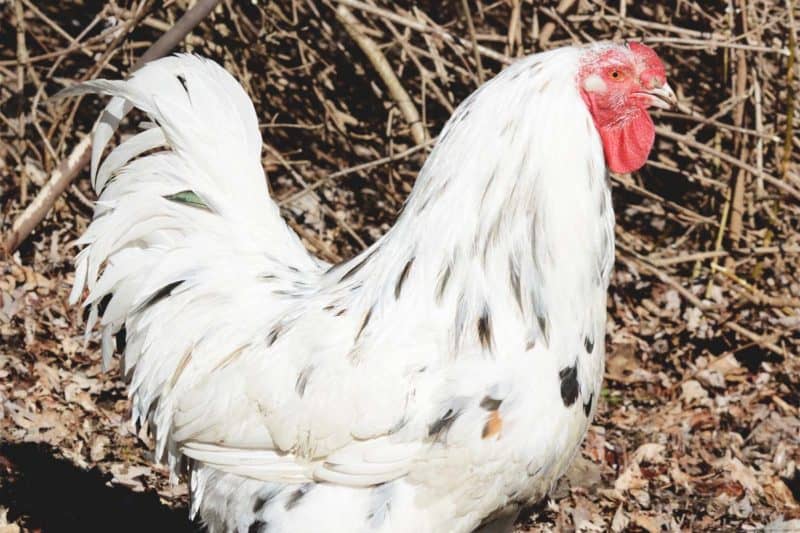
Chantecler birds thrive in cold climates. They are great egg layers.
The breed, in general, is very docile and matures extremely early. This means that they begin laying eggs early and they mature to the point of slaughter early as well. This breed is great for free-range because they like to forage along with their feed.
| Weight (male) | 9 lbs |
| Weight (female) | 7 lbs |
| Harvest time | 11-16 weeks |
| Egg production (annual) | 200 |
| Pros & cons | Fast growth Great for free-range |
| Variants | Partridge, white |
No matter what breed of chicken you decide to raise in your backyard, eating healthy and living healthy should be the motto of everyone in this fast-paced world.
How to Fatten Your Meat Chickens the Right Way
If you are going to raise any of the meat chickens on this list, feeding them according to their dietary needs is essential to getting them in the freezer at the perfect time.
All of the meat chickens in this article have dietary needs that are similar in nature.
In order to ensure that your chickens yield the proper amount of meat to fat ratio, you will want to feed them on a 12/12 hour schedule. This means that food should be readily accessible for 12 hours per day, and completely absent for the other 12 hours.
The water should be placed on the opposite side of the pen from the chicken’s food. This ensures that they exercise enough to create lean muscle, instead of fat. If given the chance, chickens can be extremely lazy.
They also thrive on food and water.
This means that if they do not have to work to get from the food to the water, they will not get the minimum amount of exercise necessary to create the lean muscle that creates the ideal taste and texture that you are looking for on your dinner table.
For more information on correctly feeding chickens, head on over to these detailed articles:
- The Complete How To On Feeding Chickens
- What NOT to Feed Chickens
- How to Ferment Chicken Feed to Improve Egg Production
- Homemade Healthy Chicken Treats Recipes for Happy Chickens
- How to Create a Chicken Garden
